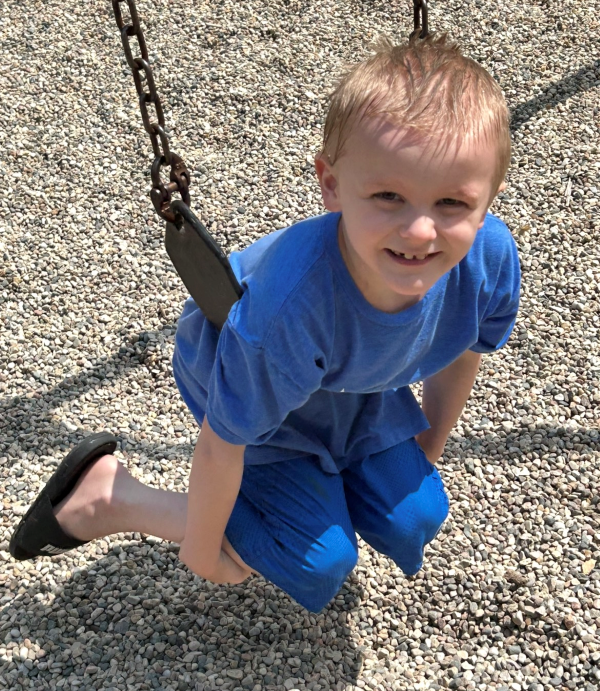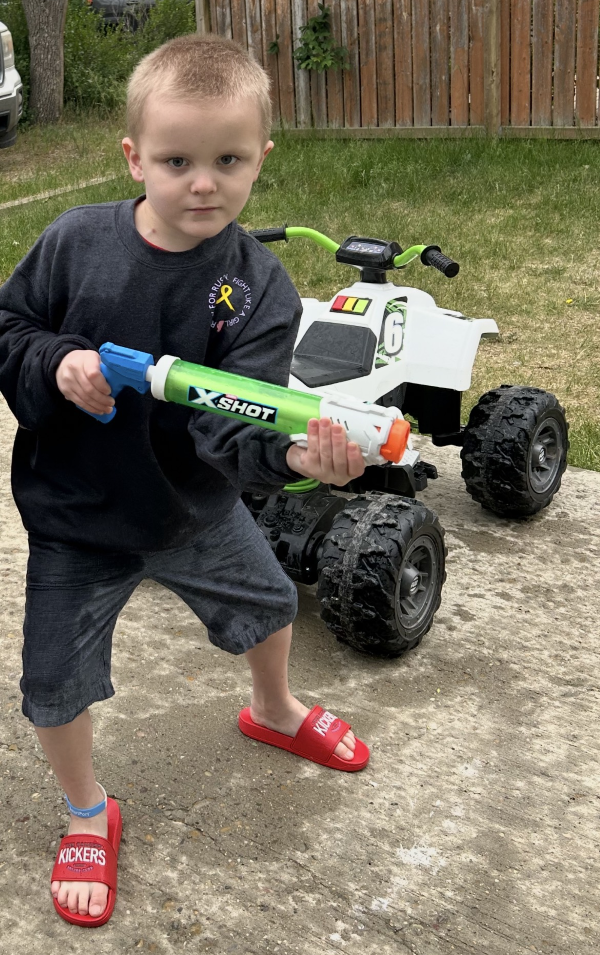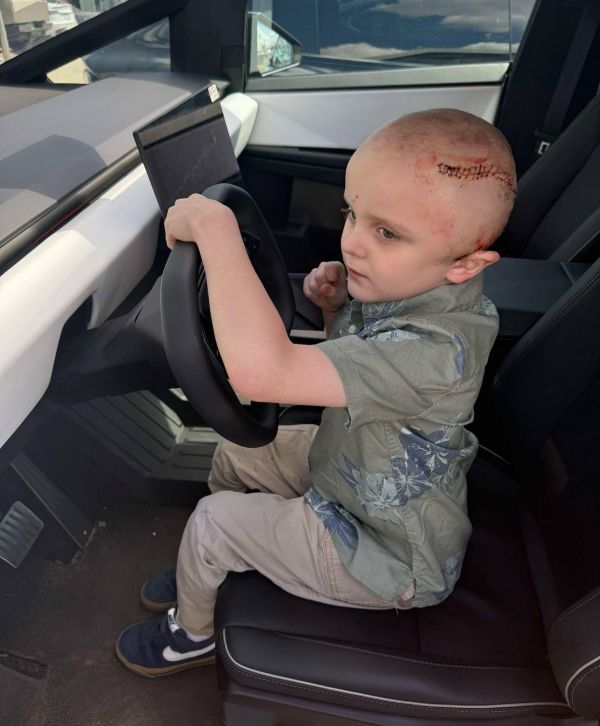
Finding gratitude in the unexpected
Emmett Undseth was just seven years old, having a pillow fight with his 10-year-old brother, when it became clear something was very wrong. With four siblings, horsing around was the norm and not usually cause for concern. This time, though, Emmett complained of severe eye pain.
“I went to get his numbing eye drops,” says Emmett’s mom, Trista Holding Undseth, adding that Emmett had experienced previous eye issues. “I thought, it’ll be better in five minutes. And then, as I’m giving him the eye drops, he starts to fall into a coma.”
Emmett’s eyes rolled back and he began vomiting. Trista, who has some emergency services training, recognized the symptoms of a coma and knew she had to act fast.
“His tumour was the size of a softball.”
 Emmett was brought to the hospital immediately. As soon as he arrived, he was intubated and induced into a full coma.
Emmett was brought to the hospital immediately. As soon as he arrived, he was intubated and induced into a full coma.
Emmett was given a CT scan, which detected what doctors thought was a brain bleed. He and Trista were flown from Swift Current, Sask., to Saskatoon, Sask., where Emmett had an MRI that revealed a brain tumour.
“His tumour was the size of a softball,” Trista says. “It was in his temporal lobe and less than a centimetre from his brain stem. And then, he had a secondary bleed, from when he’d been hit with the pillow.”
A lifesaving experience
Though the situation was certainly terrifying, Trista is grateful it unfolded the way it did.
“The doctor said the tumour would have bled no matter what,” she says, “so it was lifesaving that he had this pillow fight and his tumour didn’t start bleeding in his sleep.”
Trista’s husband made the three-hour drive to Saskatoon, joining her as Emmett underwent a procedure to drain the blood from his tumour and reduce the swelling. The next day, he had his first tumour resection.
Doctors were able to remove about 60 per cent of Emmett’s tumour, which was found to be a grade two pleomorphic xanthoastrocytoma (PXA). As his bleeding was significant, it was too risky to attempt a full removal at the time.
Emmett remained in an induced coma following his surgery, healing in hospital for the next few weeks. About two months after his first resection, he had a second resection.
“He is so strong,” Trista says. “He was like, ‘Let’s get this tumour out. Let’s get this over with.’”
Doctors were able to remove 95 per cent of Emmett’s tumour the second time around, having to leave a small portion that sits close to his brainstem. It’s about the size of a fingertip, Trista explains.
“A true warrior”
 She’s hopeful that chemotherapy, which Emmett recently started, will shrink the remaining part of Emmett’s tumour. The family makes the three-hour trip to and from Saskatoon once a week, for a total period of 70 weeks, so Emmett can be treated with vinblastine. Prior to this, Emmett had to have a fourth surgery—this time to place a port, where his chemotherapy medication is administered.
She’s hopeful that chemotherapy, which Emmett recently started, will shrink the remaining part of Emmett’s tumour. The family makes the three-hour trip to and from Saskatoon once a week, for a total period of 70 weeks, so Emmett can be treated with vinblastine. Prior to this, Emmett had to have a fourth surgery—this time to place a port, where his chemotherapy medication is administered.
“He is a true warrior. He has and continues to teach us so much about resilience.”
Always making jokes and laughing, Emmett is just a regular seven-year-old who loves Minecraft, soccer and Spider-Man, who is managing his best through extraordinary circumstances.
He’d been struggling at school and more forgetful than usual leading up to his brain tumour diagnosis, Trista explains. He’d also had sensitivity to light, which didn’t seem abnormal as he’d had an eye injury that was being treated with eye drops.
Earlier on, Emmett wasn’t quite reaching milestones, and having some sensory and motor skill difficulties. He was referred to a specialist to discuss the possibility of an autism diagnosis, but nowhere in the process did a brain tumour cross anyone’s minds.
“We just thought he was who he was and we were fine with it,” Trista says. “Looking back, there were a lot of signs we didn’t see that are just so clear now.”
Chaos—and perspective
 While working through Emmett’s brain tumour diagnosis, he was tested to determine if genetics could have played a role.
While working through Emmett’s brain tumour diagnosis, he was tested to determine if genetics could have played a role.
“He has both a deletion and a mutation in his DNA,” Trista says. “The deletion is a total deletion of the cancer and tumour suppressors in his body, and the mutation is a cancer and tumour ‘driver,’ triggering those cells to grow.”
She’s hoping to have answers soon, also exploring testing options for her blended family of seven.
Along with Emmett, Trista and her husband, Austin, have 11-year-old Izzy, 10-year-old Jackson, nine-year-old Naythan and five-year-old Bryce.
“It’s chaos, but you learn to love the chaos,” she says.
Emmett’s experience has also shown the family perspective.
“His goal in life is to make those around him smile,” Trista says. “We’re so proud of his positivity, strength and bravery.”